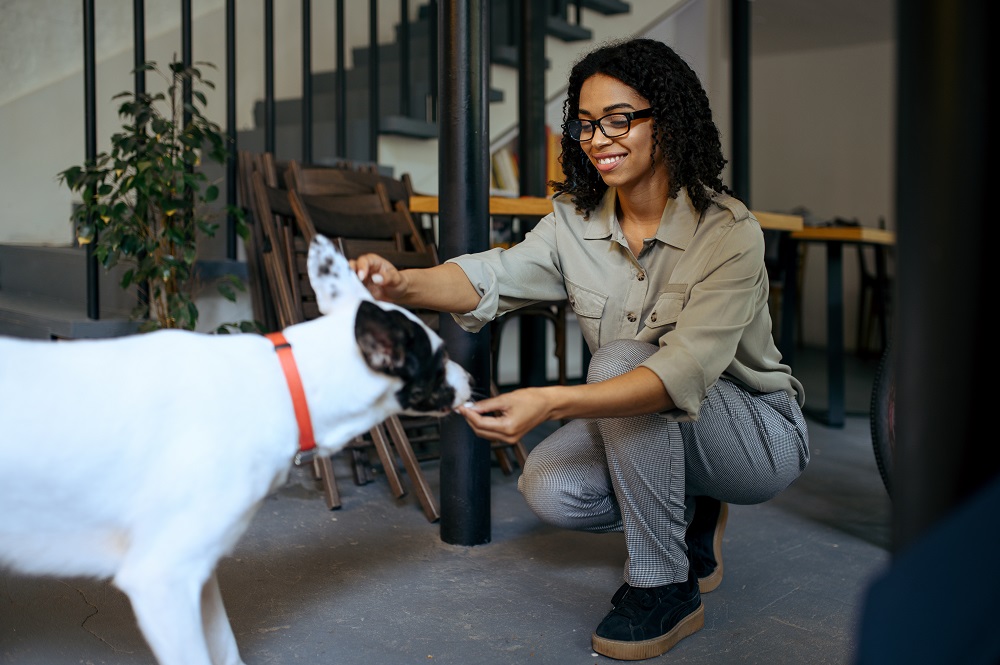How often do you brush your dog’s teeth?
Some of you may say, “Is this mandatory? Because my pooch is quite energetic and won’t let me do that!” Well, yes. It is mandatory to brush your dog’s teeth, the same as you’re clipping the nails, brushing the fur, or getting the annual vaccines.
If your puppy is still pretty small, its breath might smell nice, but that might not be the case as it gets older. A stinky mouth means you don’t want to be close to your dog, but it also means you may have painful or dangerous dental problems. Just like with people, taking your dog to the dentist will cost you some money.
Many dogs have some dental disease by the time they are three years old. It makes sense since dogs don’t brush their teeth. Just think about what your teeth would look like after three years if you never did it! Also, some breeds are genetically more likely to get dental disease, so even if you do everything you can to keep this from happening, it may still happen to some degree.
Many dogs have some dental disease by the time they are three years old. It makes sense since dogs don’t brush their teeth. Just think about what your teeth would look like after three years if you never did it! There are a couple of dog breeds that are prone to developing dental issues, and among them are Chihuahua, Dachshund, Pug, Boxer, and Yorkshire Terrier.
In the following lines, you will find some tips on how to brush your dog’s teeth like a PRO in the comfort of your home.

Look for a soft toothbrush
You can get smaller toothbrushes made just for pets that may be better suited to their mouths, but if you can’t find one, a soft child’s toothbrush will also do. For smaller breeds like Yorkshire, for example, you can use your finger. Just wrap a moist cloth around your fingers and scrub his teeth’s exterior, paying particular attention to the gum line. If you want them to enjoy the brushing and easily convince them to stay put, vets recommend using chicken, peanut butter, or beef-flavored toothpaste.
For all the energetic dogs who don’t accept a toothbrush (even a soft one), use this Finger Tooth Brush from Jasper that’s suitable for both large and small breeds. Don’t worry about hurting the pooch! You can brush your dog’s teeth without worrying it will hurt them. The finger toothbrush is made of silicone soft enough to protect the gums but abrasive enough to remove stubborn plaque. It’s available on Amazon for $13.99.
P.S. If you have more than one dog, never use the same toothbrush for all of them, and make sure you replace it every two months.
Let your dog get comfortable
If this is the first time you’re going to brush your dog’s teeth, expect it to be reticent. Let the pooch get comfortable with the whole process. Let it sniff and taste the toothpaste before you start. Oh, and I almost forgot: never use regular toothpaste to brush your dog’s teeth! It contains harmful ingredients like xylitol. Dogs can’t spit out the foam, so they swallow it, and if they swallow too much, fluoride can also be harmful.
If your dog has anxiety issues, before introducing the brush, gently raise their lips and place your finger on their teeth. This will help them get used to it and, most importantly, see it won’t hurt them. Remember to keep a positive attitude and a happy voice to encourage and assure your dog there is nothing wrong with brushing its teeth.
Wash your hands before and after brushing your dog’s teeth
There are many germs in your dog’s mouth, so you should follow some basic health and safety rules while you’re doing this. Wash your hands well with warm water and soap every time, before and after brushing your dog’s teeth.
Slowly brushing in a circle
Once they’re okay with you touching their mouth and like the toothpaste, try putting the toothbrush between their cheek and teeth. Hold the toothbrush at a 45-degree angle and clean the outside of your teeth gently. Pay attention to the gum line and be firm, but don’t press too hard, because plaque tends to build up there.
You will need to slightly open your dog’s mouth to brush the lower teeth, but I don’t recommend doing it in the first sessions since your dog might be reticent. When you do it, do it gently by holding its upper jaw open with your thumb. Try to brush each side for about 30 seconds.
If your dog is not very cooperative, do not bother about brushing the insides of their teeth. Make sure to brush your dog’s teeth mainly on the outside! That’s where most of the plaque and periodontal issues happen. Your furry friend will appreciate the extra care! In case you still want to do that too but your dog won’t cooperate, going to the vet is recommended.

Did the brushing go smoothly? Reward your pooch!
With dogs, it’s all about rewards! They love it; you love seeing them happy, so why not do it after brushing too? To make brushing a good experience, give praise, and treats, or make some time to play fetch with your dog afterward. At first, keep sessions short, and as you get better, extend the time you spend brushing.
Are you wondering what toothpaste you should use to brush your dog’s teeth that’s vet-approved, free of toxic ingredients, but also tasty? Petrodex Toothpaste for Dogs and Puppies with peanut and poultry flavor is available on Amazon for only $5.20.
Brush your dog’s teeth daily!
Although brushing should be done every day, even two or three times a week is a good starting point, especially if your pooch is a bit stubborn. Always give your dog praise and love after an experience to make sure it leaves a good taste. In due time you will see your furry friend, sitting still and waiting for the daily ritual. You will be happy then!
Keep an eye out for signs of dental issues
When you brush your dog’s teeth, check it closely for dental issues. Besides plaque, keep an eye out for the gums. If they’re swollen or red and they hurt when touched, it’s a sign there might be something wrong. Bad breath and refusing to eat the food they used to love can also be signs of dental disease.
Give your dog dental chews
To keep your dog’s teeth healthy, don’t forget that brushing is only the first step. Along with brushing, give your pet dental chews or toys that have been approved by a vet. As previously mentioned, even if you do it every day, your dog’s teeth should also be cleaned by a dentist regularly. Talk to your vet about how often your dog should be checked out.
It’s important to brush your dog’s teeth with the same precision and responsibility as you brush yours. This habit can help you save more money because, as I mentioned earlier, dental issues in dogs can be as expensive, or even more so, than those in humans. Also, don’t be afraid to ask your vet for help if you’re having trouble brushing your dog’s teeth.
You may also be interested in another article from our Expert Tips section: 9 Dog Health Problems Every Pet Parent Should Know.












